Each summer since 2000, the Serpentine Pavilion has transformed a quiet corner of Kensington Gardens into one of the world’s most closely watched architectural experiments. Commissioned by the Serpentine Galleries in London, the annual pavilion offers a rare brief: design a temporary structure with complete creative freedom, no set program, and just a few months to build. The result? A showcase of radical ideas, emerging materials, and cross-cultural narratives that reflect not only the state of architecture, but the wider urgencies of design today — from sustainability and social gathering to digital fabrication and cultural identity. As the past decade has shown, the pavilion has become more than an architectural commission — it’s a conversation starter, a stage for global ideas, and a living archive of where innovation is headed.

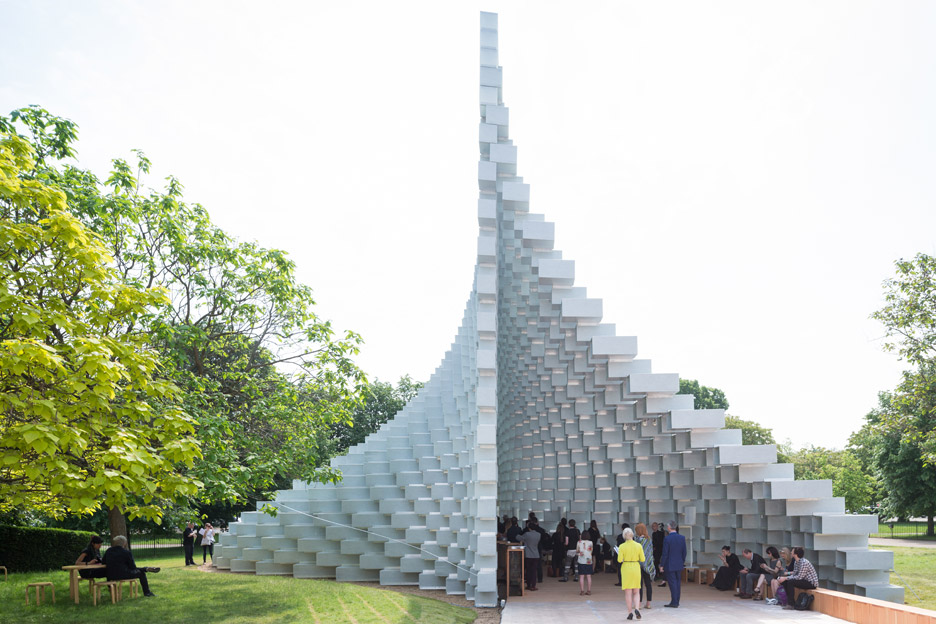
2016 – BIG: Unzipping the Wall
In 2016, Bjarke Ingels Group (BIG) redefined the limits of modular design with a pavilion that began as a simple wall and transformed into a multidimensional public space. The structure, composed of translucent fiberglass blocks stacked in a brickwork pattern, appeared at first glance to be a rectilinear volume. But as visitors approached, the wall seemed to unzip and swell into a sinuous, cavernous interior. This optical and spatial transformation — from solid to void, from box to blob — captured the essence of Ingels’ playful and analytical approach to architecture. Described by the architect as “both transparent and opaque,” the pavilion revealed different faces depending on the angle of view, creating a dynamic experience that was equal parts sculpture, shelter, and spectacle.
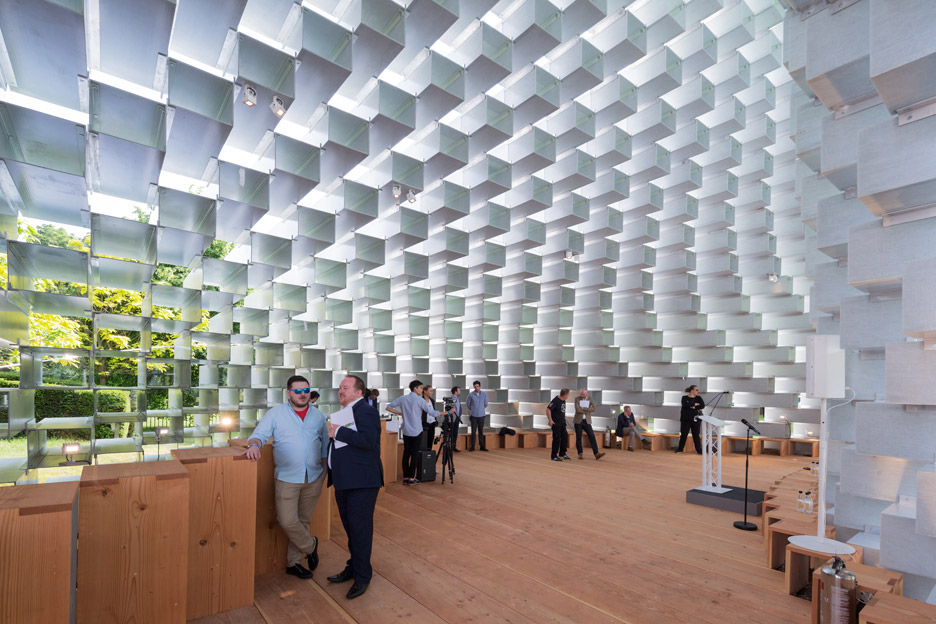
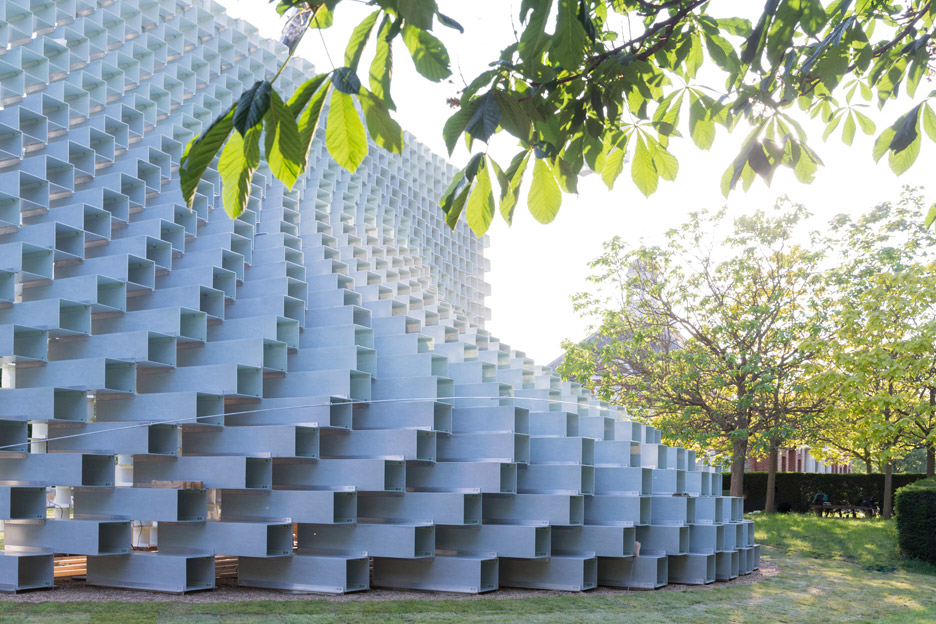
2016 – BIG: Unzipping the Wall
Conceptually, the design was inspired by a shelving system Ingels had been developing using extruded fiberglass elements — a nod to the blurred boundaries between architecture and industrial design. The pavilion functioned like a giant piece of furniture, with the wall literally pulled apart to form an interior. Inside, the wooden flooring doubled as integrated seating, encouraging visitors to linger and engage. This hybrid nature — between object and environment, digital logic and tactile space — aligned with the studio’s broader theme of “BIGamy,” a playful merging of opposites. Drawing influence from Jørn Utzon’s philosophy of creating variation through repetition, the structure paid homage to modernism while feeling unmistakably contemporary.

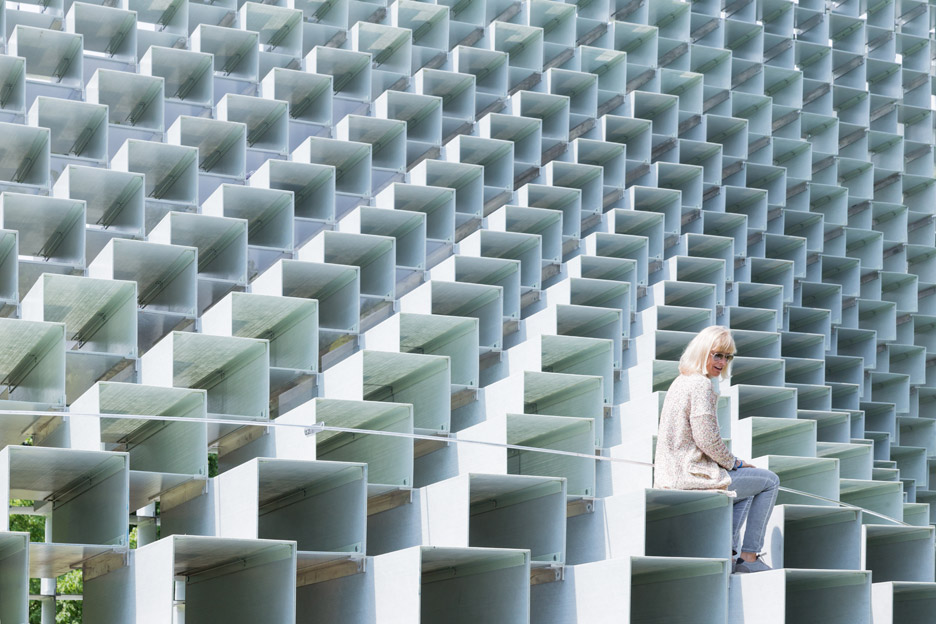
2016 – BIG: Unzipping the Wall
While not overtly marketed as a sustainable structure, the pavilion’s commitment to prefabrication, lightweight materials, and reusability underlined a thoughtful approach to resource efficiency. The use of fiberglass — a durable, translucent, and recyclable material — not only allowed for striking light diffusion but also minimized weight and waste. After its run in London, the pavilion was disassembled and relocated, reinforcing the idea that temporary architecture can have a second life.

2022 – Theaster Gates: Black Chapel
In 2022, artist Theaster Gates, in collaboration with Adjaye Associates, unveiled Black Chapel — a striking cylindrical structure that stood as a meditation on memory, craft, and spirituality. Rising over ten meters high and clad in blackened timber, the pavilion evoked sacred architecture without replicating any one religious form. Its inspiration ranged from classical references like Bramante’s Tempietto to the bottle kilns of Stoke-on-Trent, drawing a line between the sacred and the industrial, the spiritual and the handcrafted. An oculus at the roof’s center allowed light to pour into the circular space, imbuing it with a quiet solemnity that contrasted sharply with the bustle of Kensington Gardens outside.
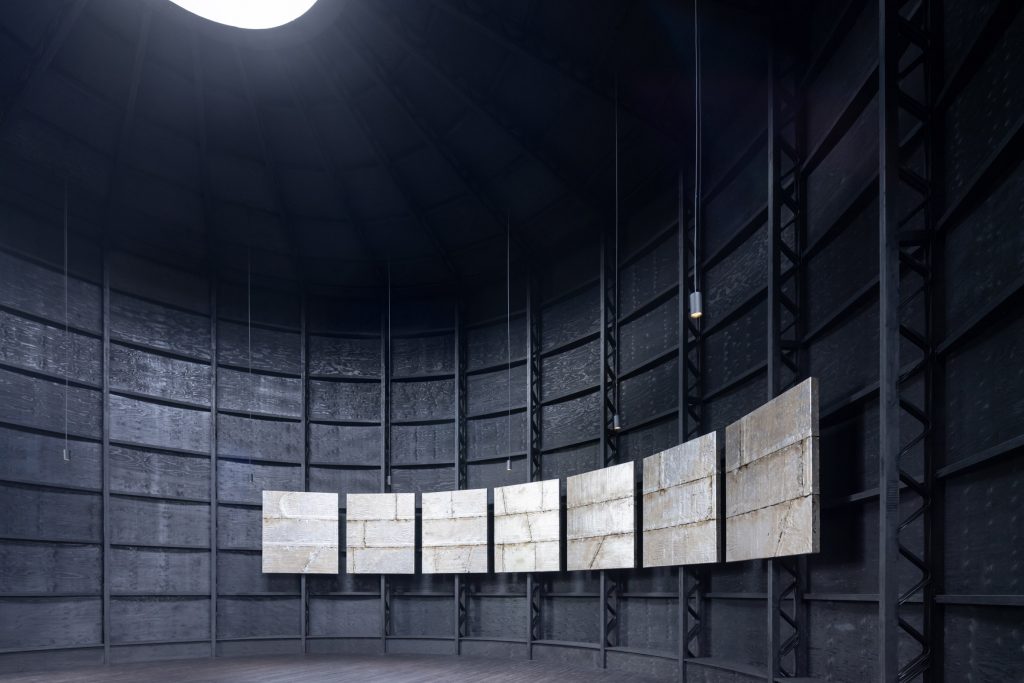
2022 – Theaster Gates: Black Chapel
Conceptually, Black Chapel was less a building and more a vessel for experience. Within its darkened volume, Gates installed seven paintings made from tar — a material with deep cultural and personal resonance. The space was activated through sound and ceremony: experimental music, tea rituals, clay workshops, and spoken-word events all unfolded under its domed timber canopy. A bronze bell salvaged from a demolished Chicago church greeted visitors at the entrance, underscoring the pavilion’s role as a conduit between past and present, presence and absence. Gates framed the pavilion as both a site of “deep reflection” and “deep participation,” encouraging visitors to reengage with the notion of sacred public space.
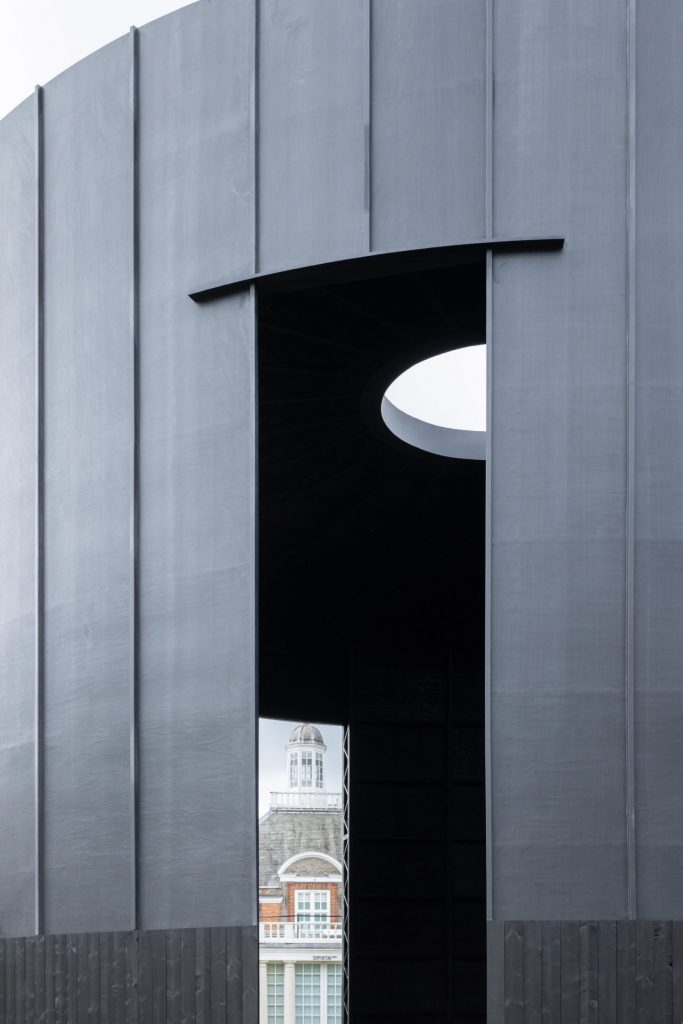

2022 – Theaster Gates: Black Chapel
Sustainability was embedded not only in the pavilion’s demountable design — later acquired by Therme Group for reuse — but also in its material choices and cultural ethos. The use of wood as primary structure reduced carbon impact, while its modularity ensured adaptability and longevity beyond its temporary context. Yet more significantly, Black Chapel advanced a broader definition of sustainability — one rooted in community healing, cultural memory, and architectural equity. It was a radical shift in authorship and voice for the Serpentine Pavilion: the first by a Black artist, and one that challenged conventional hierarchies of who builds and why.
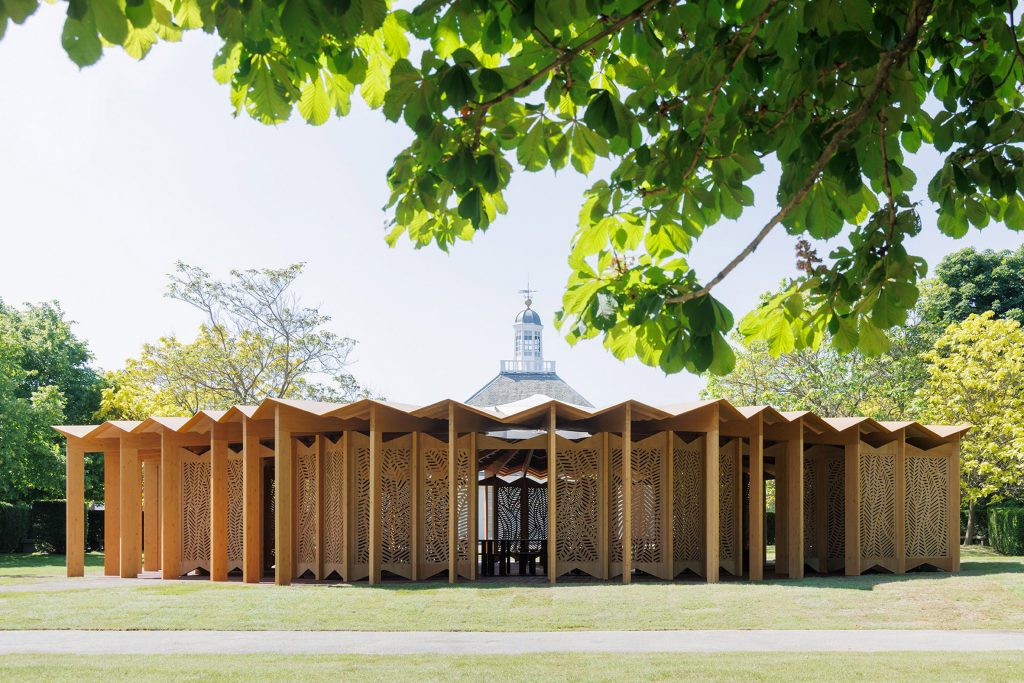
2023 – Lina Ghotmeh: À Table
In 2023, Lebanese architect Lina Ghotmeh introduced À Table, a serene and tactile intervention that reframed the pavilion not as a spectacle but as a space of gathering, rootedness, and dialogue. Inspired by the act of sharing meals — a deeply human ritual — Ghotmeh designed a timber pavilion around a trio of scalloped tables to encourage visitors to sit, talk, and reflect. The pavilion’s nine-sided form echoed the organic geometry of nearby tree roots, creating an architectural language shaped by nature rather than imposed upon it. More than just a structural canopy, À Table became a space for intimate civic communion in the heart of a busy city park.
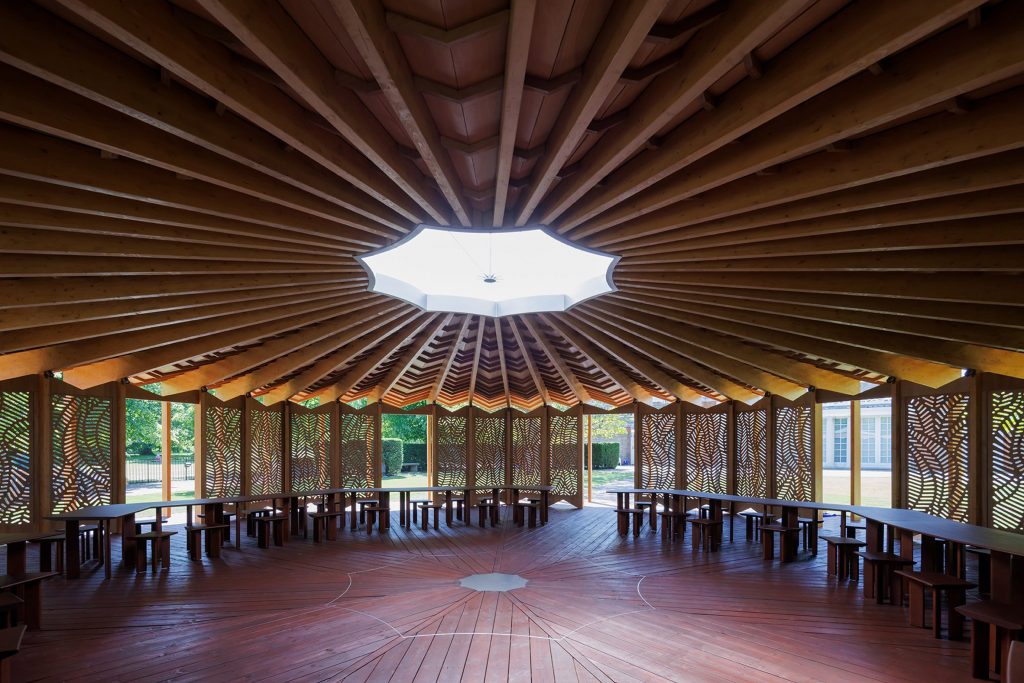

2023 – Lina Ghotmeh: À Table
The glulam and birch plywood structure featured a pleated roof and a delicate rhythm of slim columns that resembled tree trunks, blurring the boundary between architecture and forest. A central oculus — covered with pre-tensioned EFTE — allowed daylight and air to softly filter in, while perforated timber screens introduced a gradient of openness along the pavilion’s perimeter. This thoughtful modulation of enclosure and exposure created a balance between intimacy and porosity, a theme that runs through Ghotmeh’s work. Her design philosophy — rooted in environmental sensitivity and cultural continuity — sought to cultivate a slow architecture that invites attention, care, and coexistence.
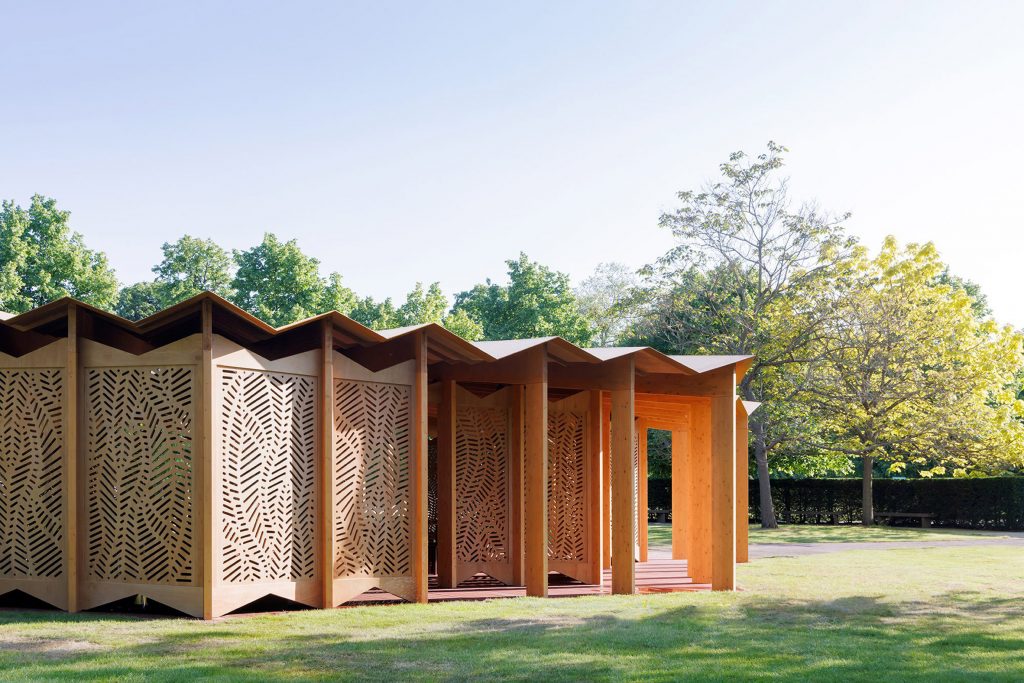
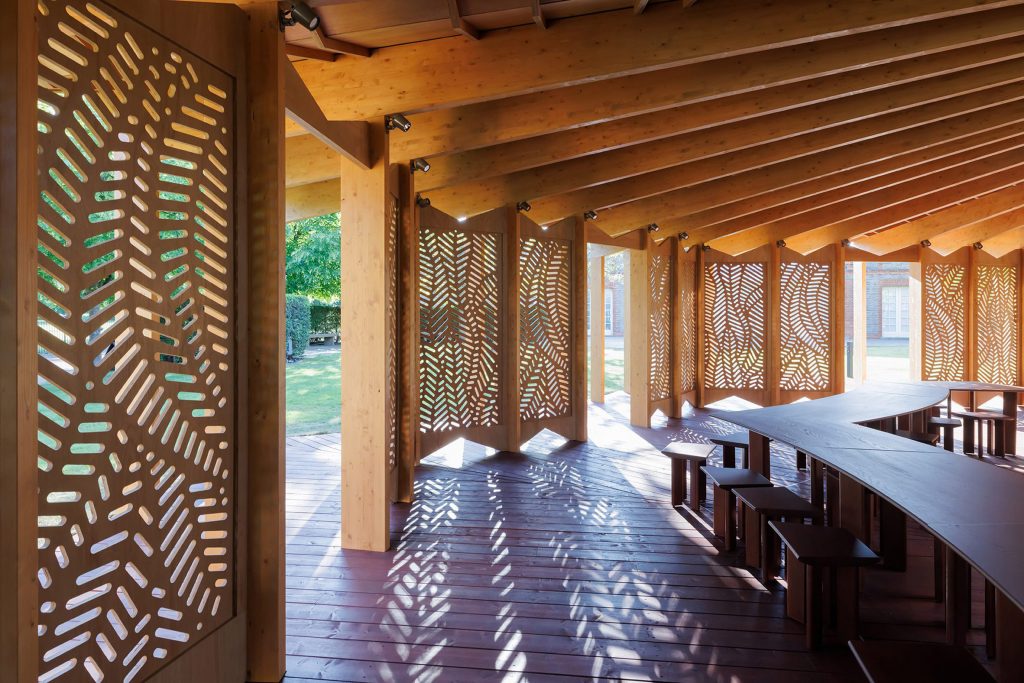
2023 – Lina Ghotmeh: À Table
Sustainability was deeply embedded in the project’s construction and lifecycle. The pavilion’s timber structure was designed for full demountability, with precision CNC cutting to minimize material waste. Offcuts were repurposed into biomass, and the suspended floor sat lightly on precast pads, eliminating the need for permanent foundations. Beyond its technical sustainability, À Table proposed a more holistic vision: a space to reconnect with the land, with others, and with the simple rituals that define human culture. It offered a calm counterpoint to louder architectural gestures — a gentle yet powerful call to sit down, reflect, and rebuild our relationship to Earth and to each other.
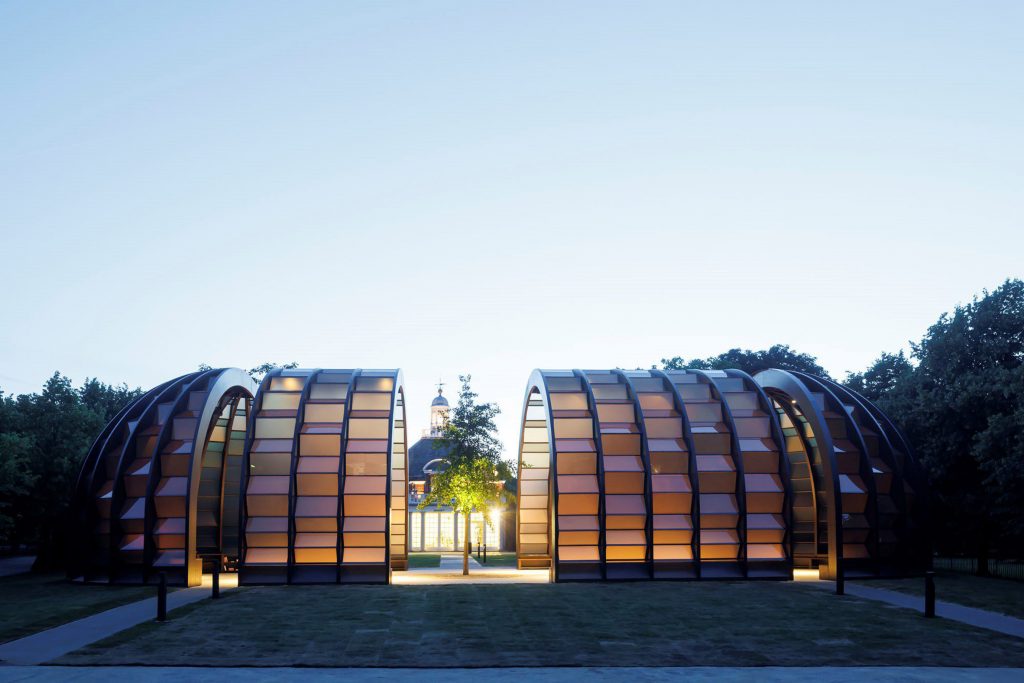
2025 – Marina Tabassum: A Capsule in Time (also header image)
For the 25th edition of the Serpentine Pavilion, Bangladeshi architect Marina Tabassum has introduced A Capsule in Time — a luminous, timber-framed structure designed not only for summer reflection but for a purposeful afterlife. Composed of four half-capsule-shaped glulam arches arranged around a tranquil courtyard, the pavilion blurs the line between enclosure and openness. Light and air filter through full-height openings and translucent polycarbonate panels, drawing visitors into a fluid dialogue with the park beyond. Tabassum describes the space as a celebration of summer — ephemeral, radiant, and open — while also anchoring it in a longer architectural lifecycle.

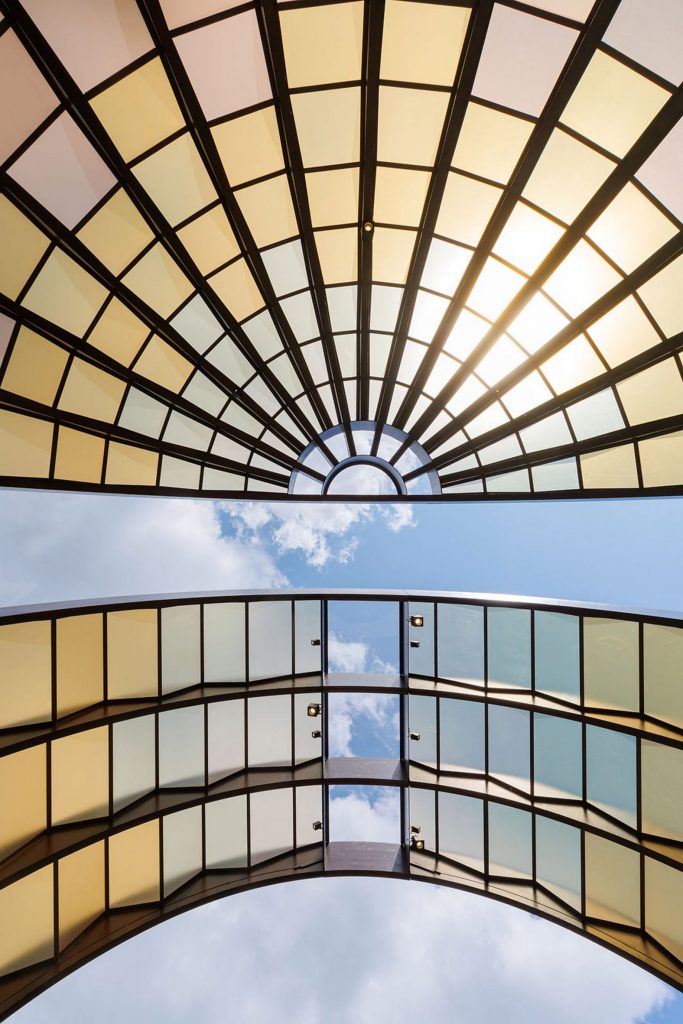

2025 – Marina Tabassum: A Capsule in Time
Drawing from the ceremonial lightness of South Asian Shamiyanas, the pavilion’s material palette favors simplicity and resonance. Glulam timber frames offer warmth and structural clarity, while the polycarbonate skins diffuse daylight in soft, diaphanous tones. The central courtyard, planted with a Ginkgo tree and aligned with the Serpentine Gallery’s bell tower, serves as the “soul of the pavilion” — a quiet void that frames the sky and invites stillness. Tabassum’s vision emphasizes flexibility: built-in bookshelves double as seating, a small café activates the southern end, and modular segments can be rearranged to accommodate varied events. The design is both poetic and practical, rooted in hospitality and inclusion.
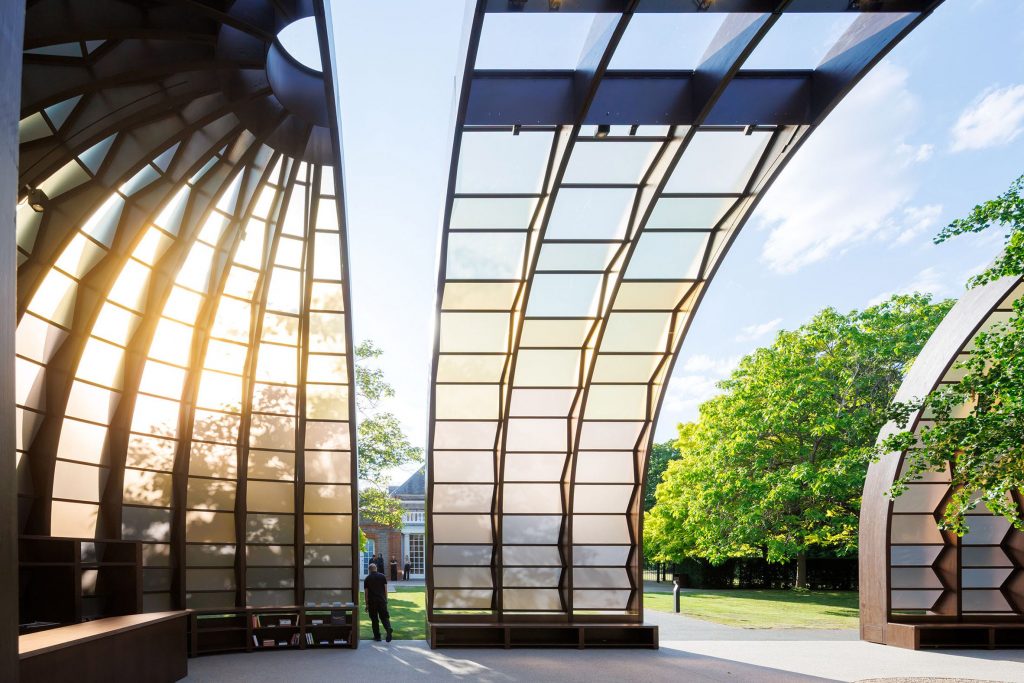
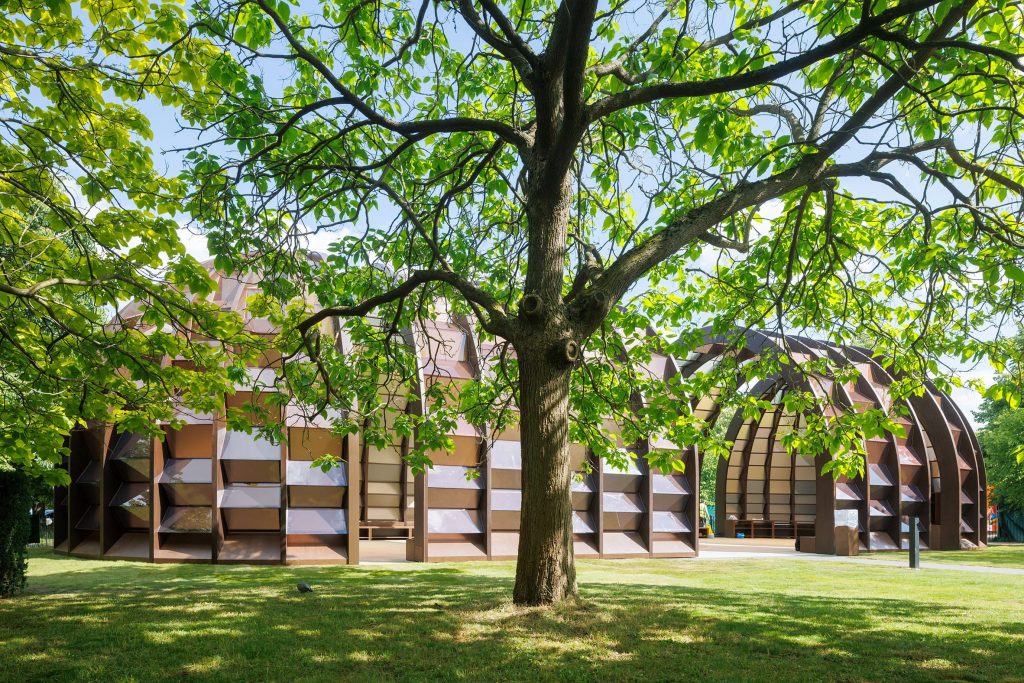
2025 – Marina Tabassum: A Capsule in Time
From the outset, the pavilion is conceived with its afterlife in mind — a rare but increasingly essential approach to sustainability in temporary architecture. Tabassum envisions the structure as a library once its London residency ends, emphasizing longevity over spectacle. Every element is demountable, adaptable, and crafted to live on in another context. In this way, A Capsule in Time challenges the disposability often associated with temporary pavilions and reframes architecture as a continuum — one that honors both the moment and the future. It is a pavilion that does more than respond to its setting; it looks forward, offering an architecture of light, care, and enduring purpose.